North America, with its diverse landscapes and vibrant cultures, offers a plethora of opportunities for eco-friendly travel. From the Caribbean’s serene beaches to the Canadian Rockies’ rugged wilderness, each destination provides a unique way to experience the continent’s beauty while minimizing environmental impact. This guide explores ten eco-friendly destinations across North America, highlighting how travelers can enjoy these places responsibly and sustainably.
1. Banff National Park, Canada

Image Credit: Shutterstock / Likona milo
Banff National Park, nestled in the Canadian Rockies, is a marvel of nature, offering turquoise lakes, towering mountains, and abundant wildlife. The park’s commitment to conservation is evident in its well-maintained trails, eco-friendly public transportation, and educational programs. Activities like canoeing on Lake Louise, hiking amidst the breathtaking scenery of Moraine Lake, and wildlife viewing are popular. The park’s townsite, Banff, is a charming hub with sustainable dining and shopping options, reflecting the community’s dedication to preserving the area’s natural beauty.
Insider’s Tip
Take a guided eco-tour to learn about the park’s ecosystem and conservation efforts.
How to Get There
The nearest major airport is Calgary International Airport, followed by a scenic drive to Banff.
When to Travel
Summer for hiking and lake activities, winter for skiing and snowboarding.
2. Costa Rica’s Pacific Coast
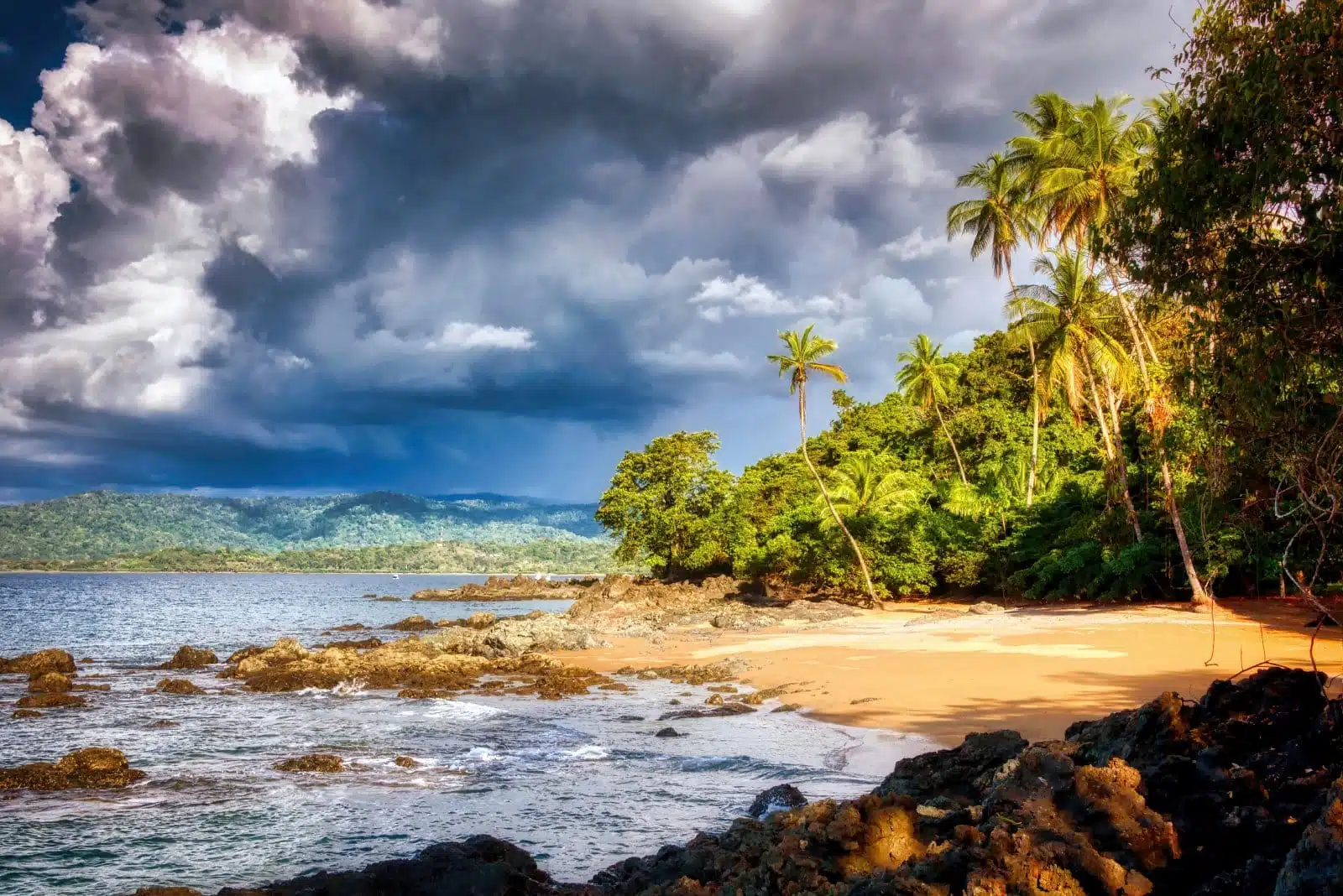
Image Credit: Shutterstock / PAUL ATKINSON
Costa Rica’s Pacific Coast is a testament to the country’s leadership in sustainable tourism. This biodiverse region, with its rainforests meeting the ocean, offers a plethora of eco-friendly activities. Visitors can enjoy sustainable surfing, zip-lining through the forest canopy, and participating in wildlife conservation projects. The area is dotted with eco-lodges and sustainable resorts focusing on minimizing environmental impact while providing immersive nature experiences. The local communities are actively involved in conservation, making it a destination where tourism directly contributes to environmental preservation.
Insider’s Tip
Stay in an eco-lodge that supports local conservation projects.
How to Get There
Fly into Juan Santamaría International Airport and travel to the Pacific Coast by road.
When to Travel
December to April for dry weather and optimal wildlife viewing.
3. Yellowstone National Park, USA
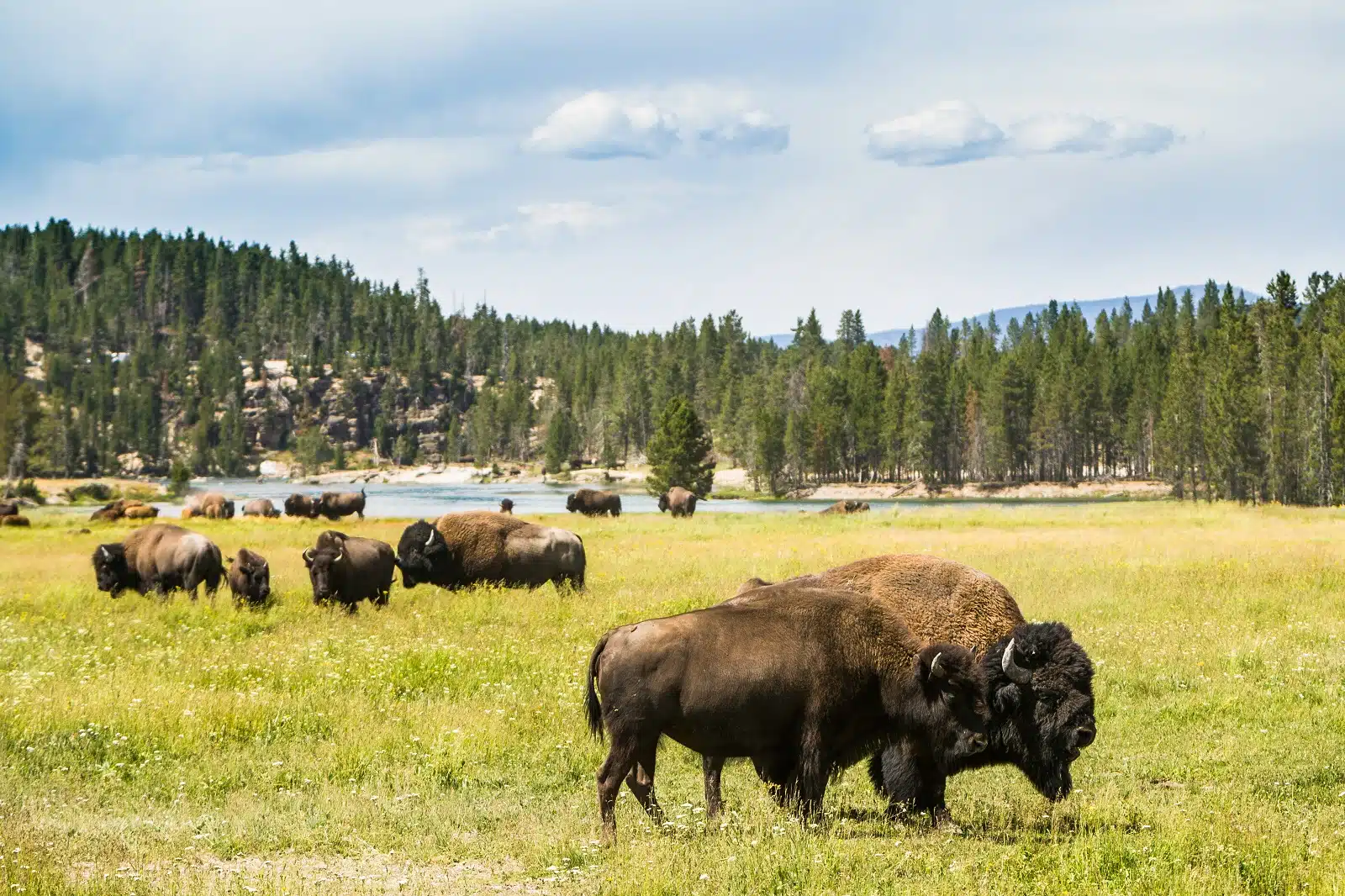
Image Credit: Shutterstock / Laurens Hoddenbagh
Yellowstone National Park, a geological wonder, is known for its geysers, hot springs, and diverse ecosystems. The park’s approach to sustainability includes limiting vehicle traffic in certain areas and promoting responsible wildlife viewing. Visitors can explore the park’s vast wilderness, witness the Old Faithful geyser’s eruptions, and spot bison, elk, and possibly wolves. The park offers numerous ranger-led programs that educate visitors on the importance of conservation and the unique features of Yellowstone’s environment.
Insider’s Tip
Explore the park with a certified eco-tour guide to gain deeper insights into its unique ecosystem.
How to Get There
The nearest airports are in Bozeman, Montana, and Jackson Hole, Wyoming.
When to Travel
Late spring to early fall for most activities; winter for snowshoeing and cross-country skiing.
4. Tofino, Vancouver Island, Canada
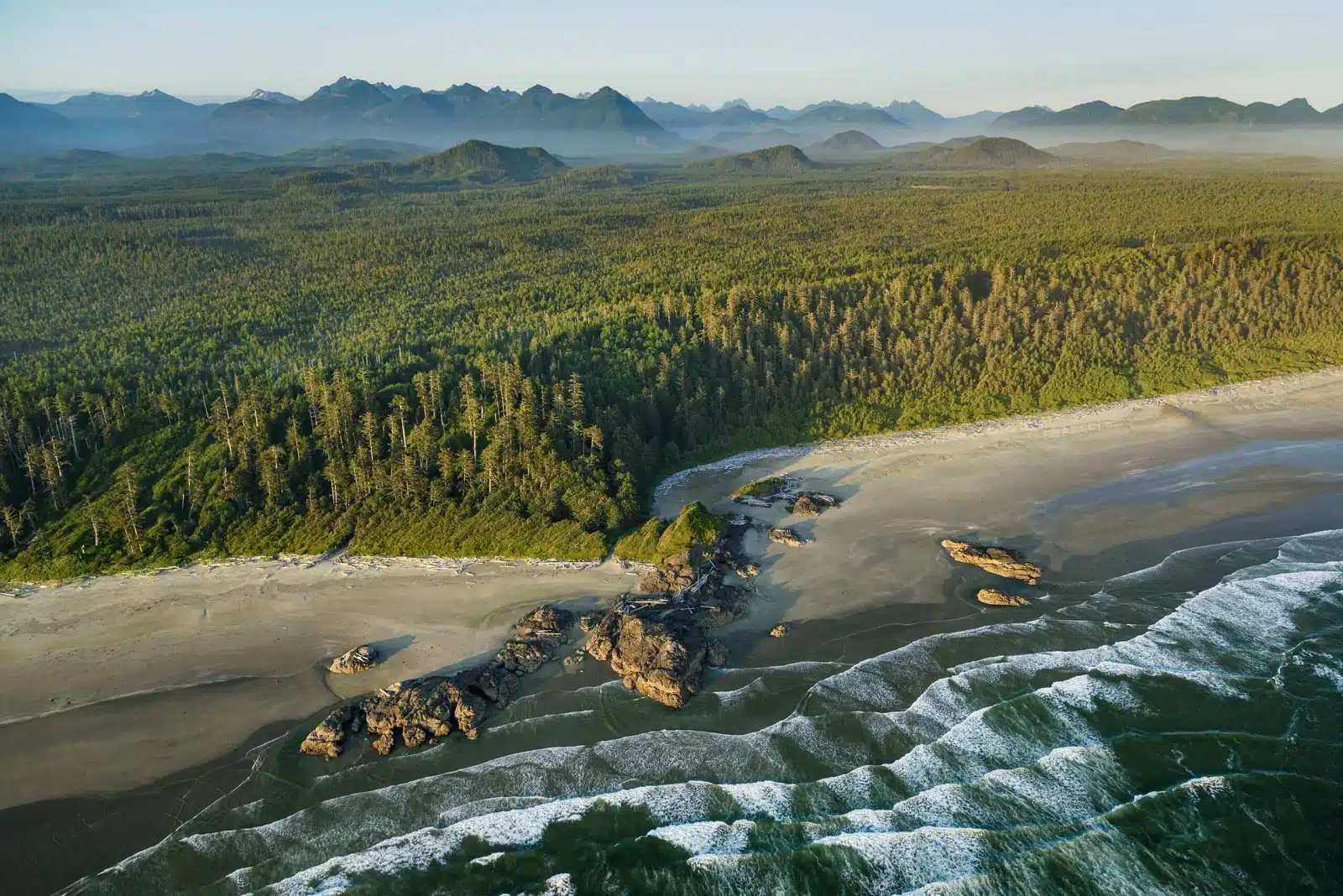
Image credit: Shutterstock / Danita Delimont
On Vancouver Island’s west coast, Tofino is a haven for eco-tourism, known for its rugged coastline and temperate rainforests. This small district is big on sustainable practices, offering eco-friendly accommodations, local culinary experiences, and a range of outdoor activities like surfing, kayaking, and bear-watching. The community’s commitment to preserving its natural environment is evident in its support for local conservation initiatives and sustainable tourism practices. Tofino’s blend of natural beauty and eco-consciousness makes it a model destination for responsible travel.
Insider’s Tip
Participate in a beach clean-up or environmental workshop offered by local organizations.
How to Get There
Fly to Vancouver, take a ferry to Vancouver Island, and drive to Tofino.
When to Travel
Summer for surfing and beach activities; winter for storm watching.
5. The Appalachian Trail, USA

Image Credit: Shutterstock / MarkVanDykePhotography
The Appalachian Trail offers a unique eco-friendly travel experience stretching over 2,000 miles across the eastern United States. This long-distance hiking trail traverses diverse landscapes, from dense forests to mountain peaks. Hikers are encouraged to follow leave-no-trace principles to minimize their environmental impact. Along the trail, there are opportunities for bird watching, viewing stunning vistas, and experiencing the tranquility of nature. The trail’s maintenance and conservation are supported by numerous volunteer organizations, reflecting a community commitment to preserving this natural treasure.
Insider’s Tip
Plan your hike to coincide with off-peak times to minimize impact on the trail.
How to Get There
Access points vary; major airports near the trail include Atlanta, Georgia, and Bangor, Maine.
When to Travel
Spring and fall for milder temperatures and fewer crowds.
6. The Florida Keys, USA
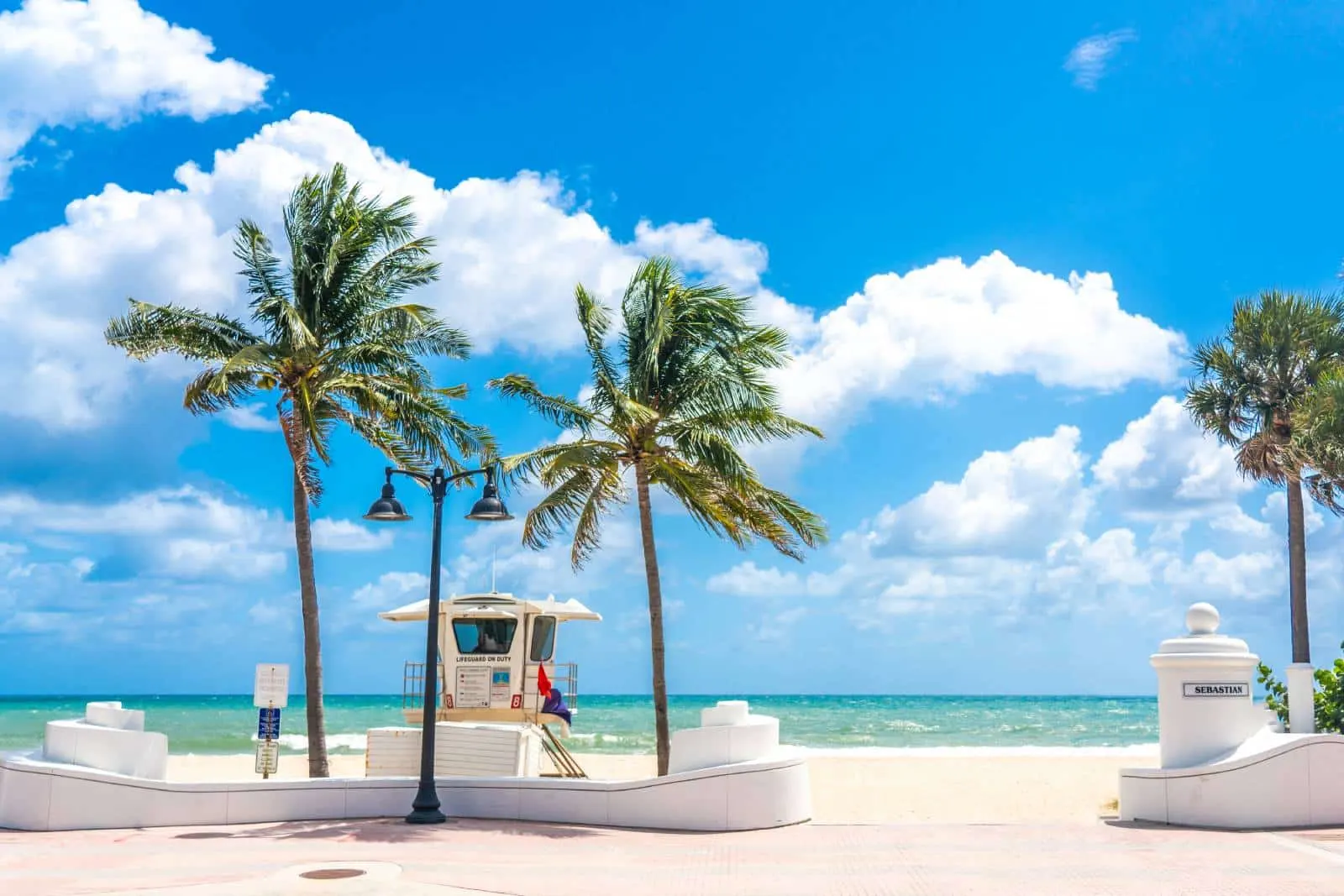
Image Credit: Shutterstock / mariakray
The Florida Keys, a coral cay archipelago, are committed to preserving their unique marine environment. Known for their crystal-clear waters and vibrant coral reefs, the Keys offer sustainable water activities like eco-friendly snorkeling, diving, and fishing. The region’s eco-tourism initiatives focus on coral reef conservation and environmental education. Visitors can explore the Florida Keys Eco-Discovery Center or participate in guided eco-tours to learn about the local ecosystems and conservation efforts.
Insider’s Tip
Choose snorkeling and diving operators that are certified in sustainable practices.
How to Get There
Fly into Miami International Airport, drive to the Keys, or fly directly to Key West.
When to Travel
December to May for the best weather and water conditions.
7. Big Sur, California, USA
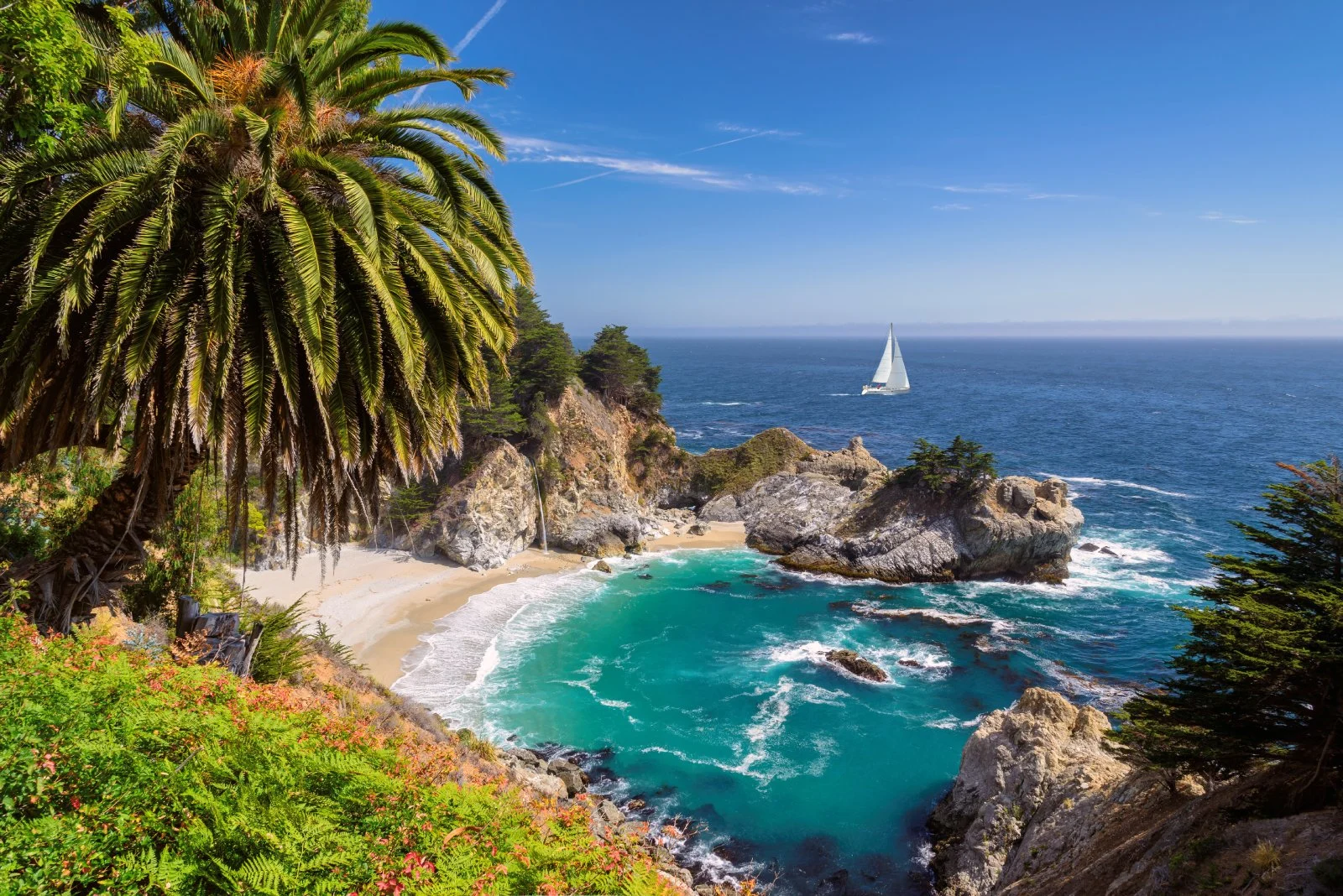
Image Credit: Shutterstock / Lucky-photographer
Big Sur, a stretch of California’s coastline, is renowned for its dramatic cliffs, redwood forests, and pristine beaches. This area is a prime example of sustainable tourism, with eco-friendly lodges and campgrounds emphasizing minimal environmental impact. Hiking trails like the Overlook Trail offer stunning views of the Pacific Ocean, while spots like McWay Falls provide serene natural beauty. Big Sur’s commitment to conservation is evident in its protected areas and the community’s efforts to preserve its unspoiled landscapes.
Insider’s Tip
Visit the Big Sur Eco Center to learn about local sustainability efforts.
How to Get There
Drive along the scenic Highway 1 from San Francisco or Los Angeles.
When to Travel
Spring and fall for mild weather and fewer tourists.
8. The Blue Mountains, Jamaica
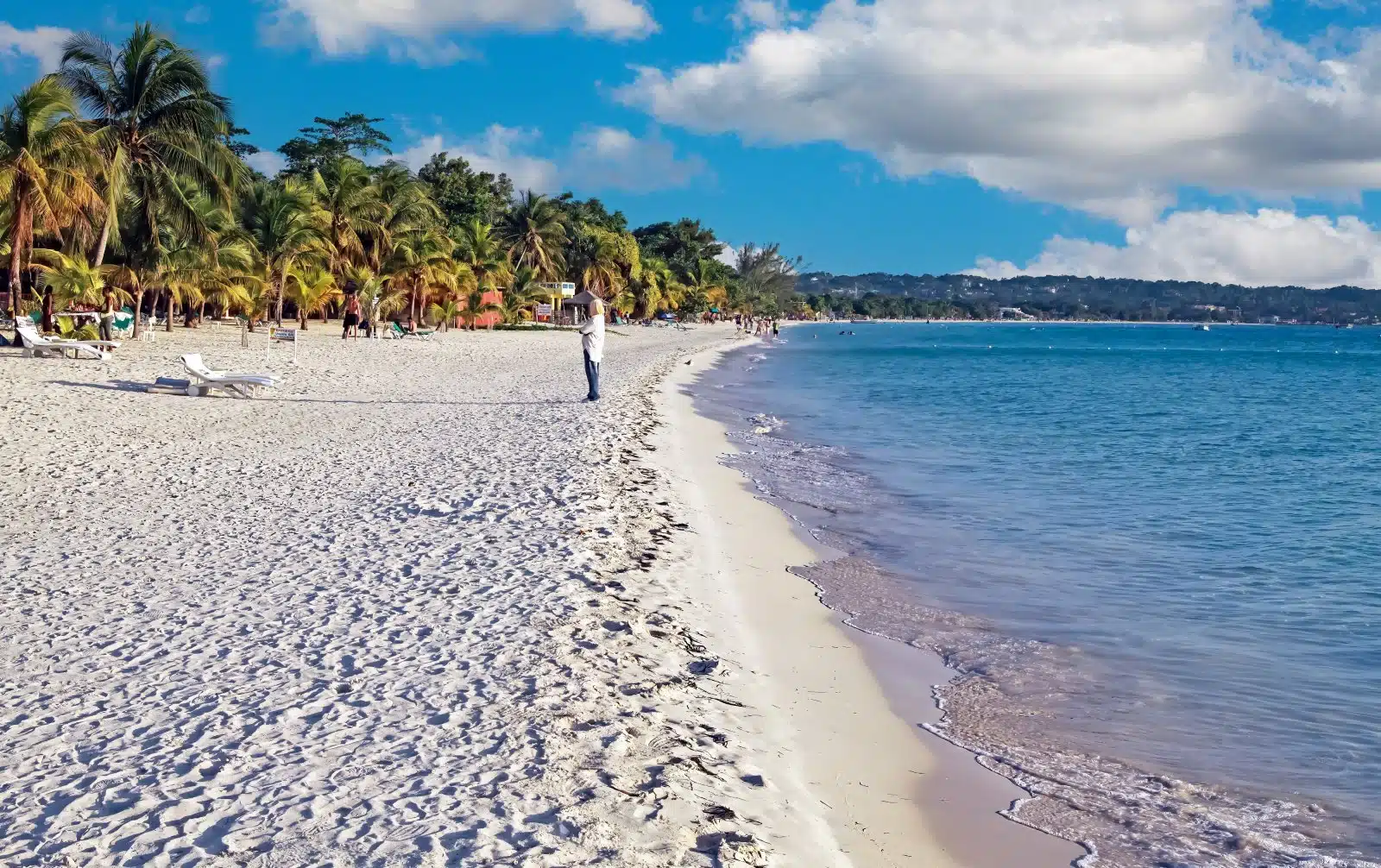
Image Credit: Shutterstock / Ralf Liebhold
The Blue Mountains in Jamaica offer more than just world-famous coffee; they are a hotspot for eco-tourism. The region’s lush landscapes and rich biodiversity make it ideal for hiking, bird watching, and exploring the local culture. Sustainable tours of coffee plantations educate visitors on eco-friendly farming practices. The Blue and John Crow Mountains National Park, a UNESCO World Heritage site, provides a haven for endemic species and showcases the importance of conservation in preserving Jamaica’s natural heritage.
Insider’s Tip
Stay in eco-friendly accommodations that support local community projects.
How to Get There
Fly into Kingston and travel by road to the Blue Mountains.
When to Travel
December to April for the best weather.
9. Glacier National Park, Montana, USA

Image Credit: Shutterstock / Tomas Nevesely
Glacier National Park, known for its stunning alpine scenery and diverse wildlife, is a leader in environmental sustainability. The park’s numerous trails offer access to its rugged beauty, with chances to see wildlife like mountain goats and grizzly bears. Glacier’s commitment to reducing its carbon footprint includes shuttle services and renewable energy initiatives. The park’s educational programs highlight the impacts of climate change on its glaciers and ecosystems, making it a destination for recreation and learning.
Insider’s Tip
Join a ranger-led program to learn about the park’s unique ecosystem and conservation challenges.
How to Get There
The nearest airports are in Kalispell and Great Falls, Montana.
When to Travel
Summer for most park activities; winter for snowshoeing and skiing.
10. The Mayan Riviera, Mexico
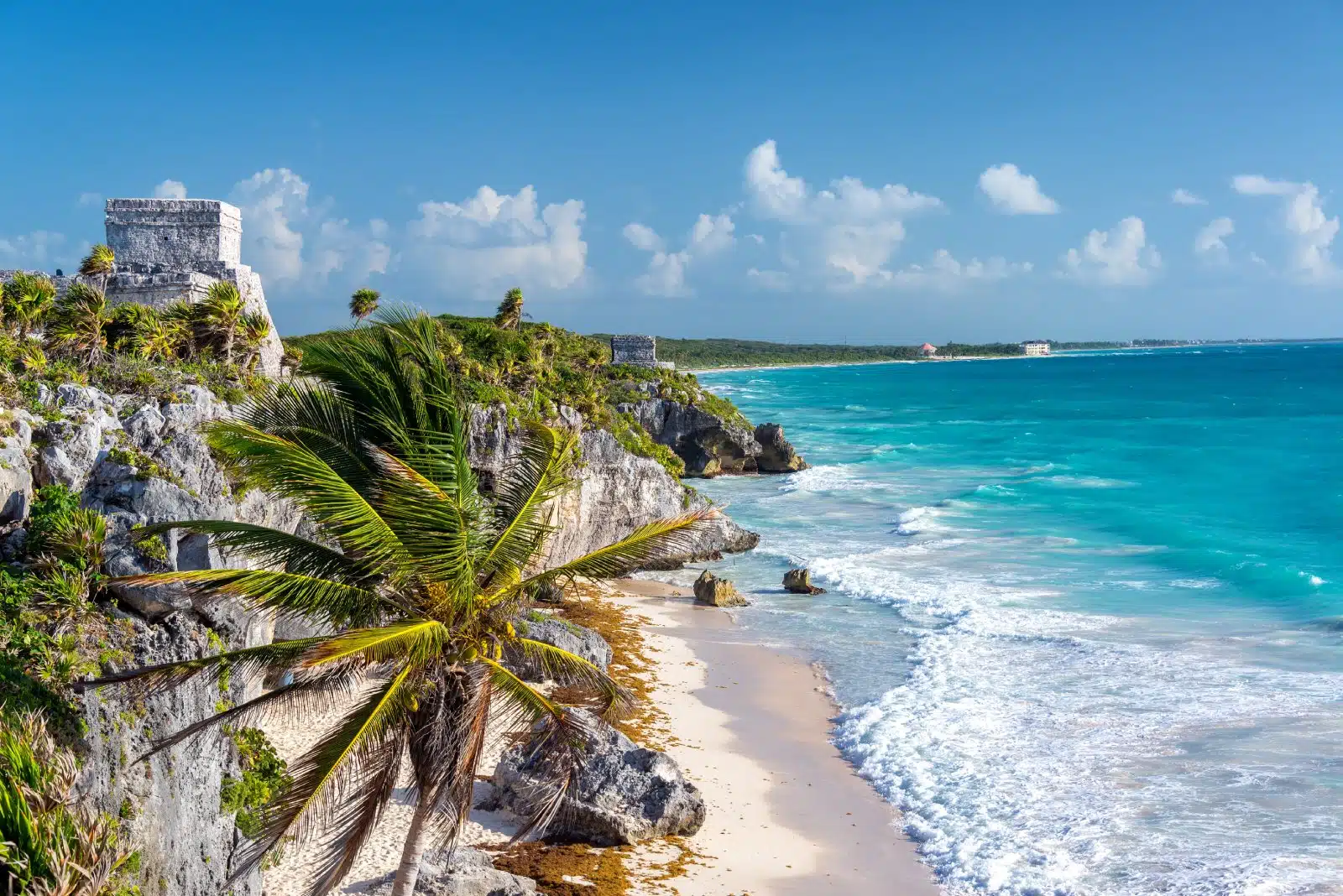
Image Credit: Shutterstock / Jess Kraft
Along Mexico’s Caribbean coast, the Mayan Riviera combines natural beauty with sustainable tourism. The region is known for its white-sand beaches, cenotes, and eco-friendly resorts. Activities like snorkeling in eco-parks, visiting sustainable Mayan community projects, and exploring the Sian Ka’an Biosphere Reserve offer immersive experiences in nature while supporting conservation efforts. The Mayan Riviera’s approach to tourism prioritizes the preservation of its unique ecosystems and cultural heritage, making it an ideal destination for eco-conscious travelers.
Insider’s Tip
Choose accommodations and tours that have a certification in sustainable tourism.
How to Get There
Fly into Cancún International Airport and travel south along the coast.
When to Travel
November to April for the best weather and to avoid the seaweed season.
11. Vancouver Island, British Columbia, Canada

Image Credit: Shutterstock / Tamara Ferreira Schmidt
Vancouver Island showcases the harmonious coexistence of nature and mindful human activity. The island’s diverse ecosystems, ranging from temperate rainforests to rugged coastlines, offer a sanctuary for outdoor enthusiasts. Here, you can engage in whale watching, guided eco-tours, and kayaking amidst breathtaking scenery. The island is also a hub for sustainable agriculture, with numerous organic farms and wineries. The local communities are deeply invested in preserving the island’s natural beauty and cultural heritage, making it an ideal destination for those seeking an authentic and sustainable travel experience.
Insider’s Tip
Explore the island’s many eco-friendly bed and breakfasts for a more personal and sustainable stay.
How to Get There
Fly into Victoria International Airport or take a ferry from Vancouver.
When to Travel
Summer for outdoor activities and wildlife viewing, although the island’s natural beauty can be enjoyed year-round.
12. Acadia National Park, Maine, USA

Image Credit: Pexels / Blue Arauz
Acadia National Park offers a blend of rugged coastal beauty and dense forest landscapes. As you explore the park’s network of hiking trails, you’ll encounter stunning vistas, diverse wildlife, and serene woodland settings. The park’s commitment to sustainability is evident in its well-maintained trails, eco-friendly facilities, and educational programs. Activities like bird watching, cycling the carriage roads, and stargazing are popular among visitors. The park’s initiative to reduce vehicle traffic through a free shuttle service underscores its dedication to preserving its pristine environment.
Insider’s Tip
Utilize the park’s free shuttle service, which reduces traffic and helps protect the environment.
How to Get There
The nearest airport is Bangor International Airport, with a scenic drive to the park.
When to Travel
Late spring to early fall for the best weather, though winter offers unique beauty and fewer crowds.
13. The Green Mountains, Vermont, USA
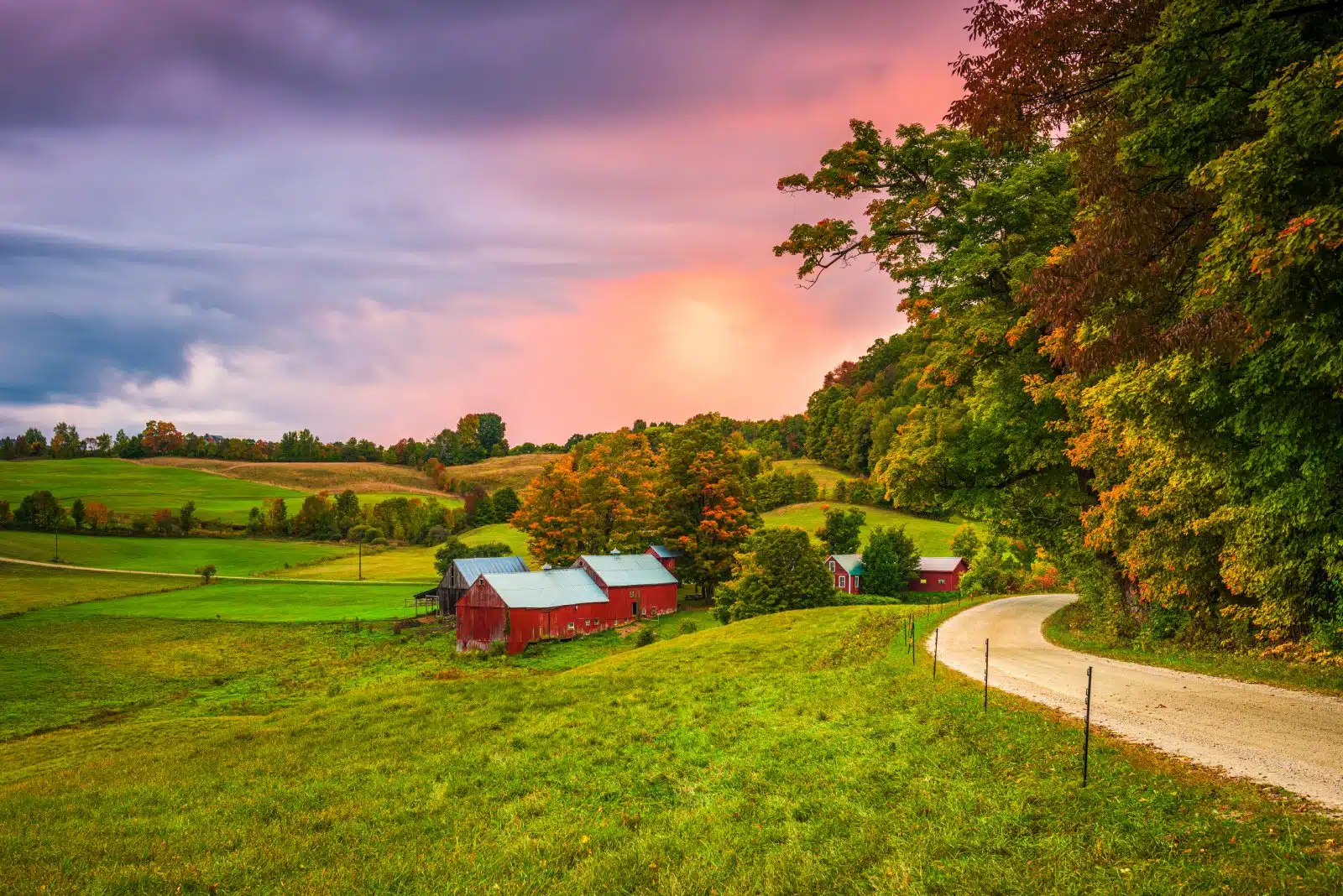
Image Credit: Shutterstock / Sean Pavone
The Green Mountains in Vermont are a haven for eco-conscious travelers seeking a blend of outdoor adventure and sustainable living. Its lush forests, rolling hills, and clear streams characterize this region. Hiking and skiing are popular activities, offering a way to immerse yourself in the area’s natural beauty. Vermont’s commitment to environmental conservation is also reflected in its vibrant local food scene, with farm-to-table restaurants and artisanal producers showcasing the best of the region’s sustainable agriculture. The Green Mountains provide a peaceful retreat, allowing you to reconnect with nature and experience the tranquility of rural life.
Insider’s Tip
Visit local farmers’ markets and farm-to-table restaurants to experience Vermont’s local and sustainable food scene.
How to Get There
Fly into Burlington International Airport or drive from major Northeast cities.
When to Travel
Year-round, each season offering its charm – skiing in winter, lush greenery in summer, and spectacular foliage in fall.
14. The Great Smoky Mountains, Tennessee/North Carolina, USA

Image Credit: Shutterstock / Margaret.Wiktor
The Great Smoky Mountains National Park, renowned for its rich biodiversity and stunning landscapes, is a prime destination for eco-friendly travel. The park’s vast expanse of ancient mountains and deep forests offers a sanctuary for various plant and animal species. Hiking through the park, you’ll encounter cascading waterfalls, blooming wildflowers, and perhaps even glimpses of native wildlife. The park’s focus on conservation and environmental education makes it an ideal destination for those looking to deepen their understanding of the natural world and the importance of preserving such environments.
Insider’s Tip
Take part in the park’s volunteer program for a day to contribute to its preservation efforts.
How to Get There
Knoxville, Tennessee, and Asheville, North Carolina are the nearest airports.
When to Travel
Spring for wildflowers, summer for hiking, and autumn for spectacular fall colors.
15. The Sonoran Desert, Arizona, USA
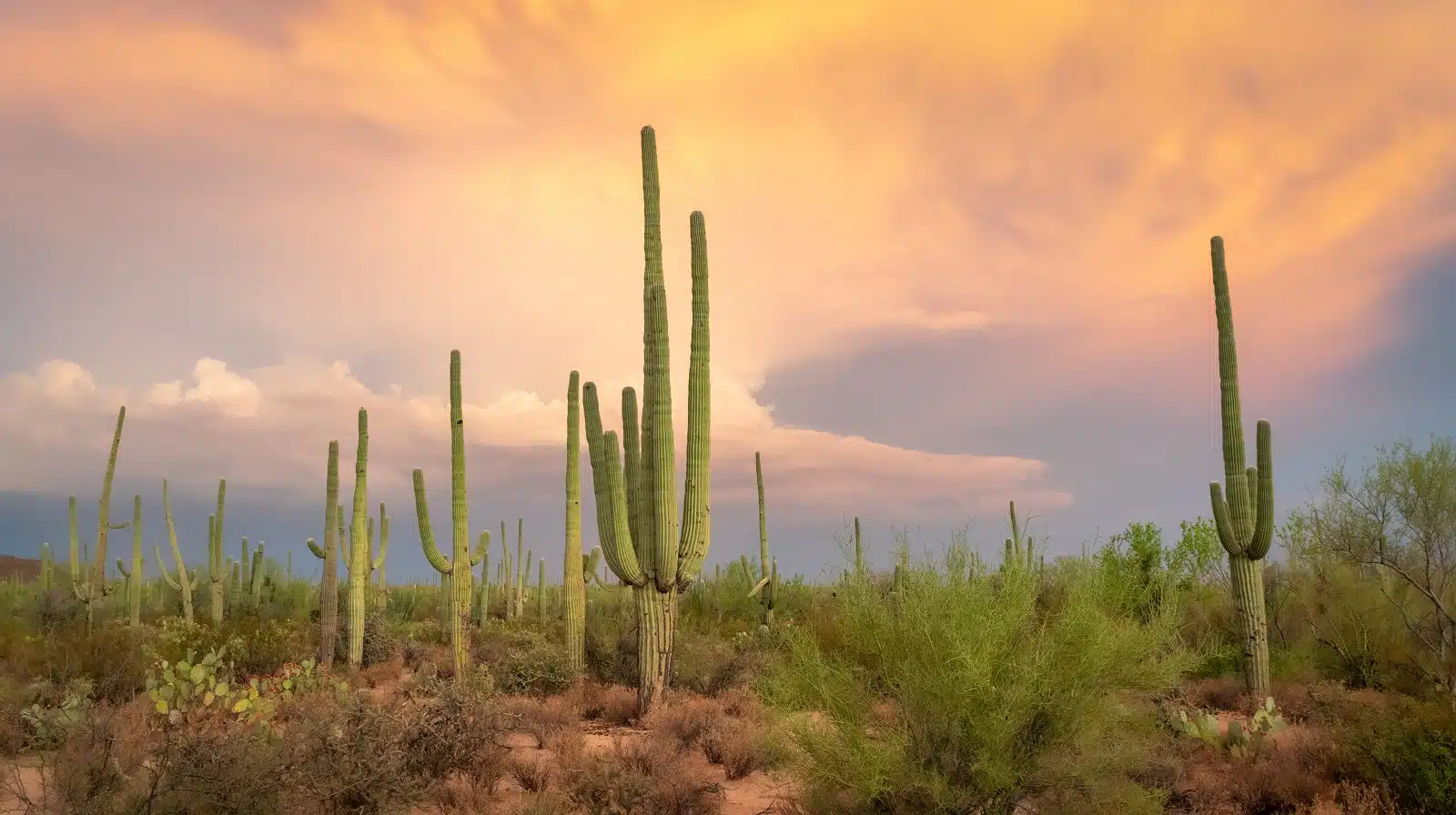
Image Credit: Pexels / Nate Hovee
The Sonoran Desert in Arizona presents a unique eco-friendly travel experience, showcasing the beauty and resilience of desert ecosystems. This region, characterized by its iconic saguaro cacti and diverse wildlife, offers a window into the adaptations necessary for life in an arid environment. Visiting conservation areas like the Saguaro National Park, you can explore the desert landscape through guided walks and educational programs. The region’s commitment to preserving its natural and cultural heritage is evident in its numerous conservation initiatives and the emphasis on sustainable tourism practices.
Insider’s Tip
Visit the Arizona-Sonora Desert Museum for an in-depth look at the desert’s ecology and conservation.
How to Get There
Fly into Tucson International Airport or Phoenix Sky Harbor International Airport.
When to Travel
Late fall to early spring for cooler temperatures and comfortable exploration.
The Bottom Line
Eco-friendly travel in North America is about experiencing the continent’s natural wonders responsibly and sustainably. From the serene beaches of the Florida Keys to the rugged wilderness of Glacier National Park, each destination offers a chance to connect with nature while supporting conservation and sustainable tourism practices. As you explore these diverse landscapes, remember that your travel choices can contribute to preserving these natural treasures for future generations. In embracing eco-friendly travel, you’re not just a visitor but a steward of the earth’s beauty and diversity.
More From The Green Voyage
12 Best Practices for Sustainable Travel in 2024 – How to Travel With Minimal Environmental Impact
Unlocking Hotel Perks – A Traveler’s Guide to Maximizing Hotel Reward Programs for Optimal Benefits
Travel Hacks for Frequent Flyers – 6 Tips and Tricks to Make the Best of Air Travel
The post Eco-Friendly Travel in North America 2024 – 15 Destinations From Coast to Coast first appeared on The Green Voyage.
Featured Image Credit: Shutterstock / Maridav.
For transparency, this content was partly developed with AI assistance and carefully curated by an experienced editor to be informative and ensure accuracy.
Tips for Trip Success
Book Your Flight
Find an inexpensive flight by using Kayak, a favorite of ours because it regularly returns less expensive flight options from a variety of airlines.
Book Your Hotel or Special Accommodation
We are big fans of Booking.com. We like their review system and photos. If we want to see more reviews and additional booking options, we go to Expedia.
You Need Travel Insurance!
Good travel insurance means having total peace of mind. Travel insurance protects you when your medical insurance often will not and better than what you get from your credit card. It will provide comprehensive coverage should you need medical treatment or return to the United States, compensation for trip interruption, baggage loss, and other situations.Find the Perfect Insurance Plan for Your Trip
